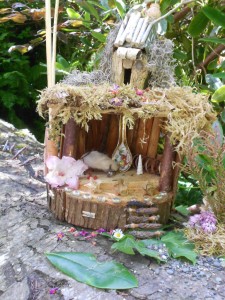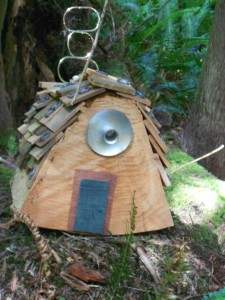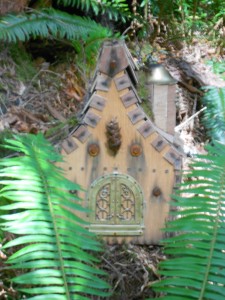Fairy Houses Are Not Just For Girls
 This weekend, we celebrated the first day of summer with a visit to a special fairy house display. There were houses for all kinds of imagination, using a variety of materials. There were lots of families with little girls but not many with little boys. I wondered if some parents thought the fairy houses were not appropriate for boys? Shortly afterwards, when scanning some early childhood sites, I found a petition for gender-neutral toys. Although the petition was for parents in Australia, maybe we could use one here.
This weekend, we celebrated the first day of summer with a visit to a special fairy house display. There were houses for all kinds of imagination, using a variety of materials. There were lots of families with little girls but not many with little boys. I wondered if some parents thought the fairy houses were not appropriate for boys? Shortly afterwards, when scanning some early childhood sites, I found a petition for gender-neutral toys. Although the petition was for parents in Australia, maybe we could use one here.
 The petition was asking to “stop telling parents, grandparents and children that dolls, princesses, home appliances, fashion and everything pink is for girls while construction, trucks, action games, superheroes and anything blue is for boys.” If you take a walk through a toy store, the selection is divided into 2 halves: boy toys and girl toys. Why can’t the toys be organized by type? Toys can be generally displayed as Construction Toys, Pretend Play, Infant and Baby Toys, Wheels and Zoomers, Stuffies and Dolls, SuperHeros, Puzzles, etc. Kids could choose the kinds of toys they want to play with instead of being limited by gender.
The petition was asking to “stop telling parents, grandparents and children that dolls, princesses, home appliances, fashion and everything pink is for girls while construction, trucks, action games, superheroes and anything blue is for boys.” If you take a walk through a toy store, the selection is divided into 2 halves: boy toys and girl toys. Why can’t the toys be organized by type? Toys can be generally displayed as Construction Toys, Pretend Play, Infant and Baby Toys, Wheels and Zoomers, Stuffies and Dolls, SuperHeros, Puzzles, etc. Kids could choose the kinds of toys they want to play with instead of being limited by gender.
 Some interesting research has found that when chimpanzees are given a selection of toys to play with, more female chimps choose dolls and stuffies and more male chimps choose trucks and wheeled toys, although the numbers choosing balls are equal for males and females. The males and females also play with the toys in different ways, but the choices are not made for them beforehand by limiting their access.
Some interesting research has found that when chimpanzees are given a selection of toys to play with, more female chimps choose dolls and stuffies and more male chimps choose trucks and wheeled toys, although the numbers choosing balls are equal for males and females. The males and females also play with the toys in different ways, but the choices are not made for them beforehand by limiting their access.
 Back to the fairy houses. Granted, some boys may not want to engage with dwellings that are decorated with flower petals and have tables set out with a fairy banquet. But there were mechanical ones too that hinted at secret inventions and actions. Seashells, rocks, and bark are gender-neutral.
Back to the fairy houses. Granted, some boys may not want to engage with dwellings that are decorated with flower petals and have tables set out with a fairy banquet. But there were mechanical ones too that hinted at secret inventions and actions. Seashells, rocks, and bark are gender-neutral.
 All kids have imaginative and creative abilities to develop, no matter their gender. Toy makers and retailers may not get the message any time soon but we do not need to limit children’s choices. We need to let kids have access to different kinds of toys and honor their choices. What toys does your child play with? Is gender and toy choice an issue or concern for you?
All kids have imaginative and creative abilities to develop, no matter their gender. Toy makers and retailers may not get the message any time soon but we do not need to limit children’s choices. We need to let kids have access to different kinds of toys and honor their choices. What toys does your child play with? Is gender and toy choice an issue or concern for you?
